 W
WAnadia rhombifera, the rhombifer anadia, is a species of lizard in the family Gymnophthalmidae. It is found in Colombia and Ecuador.
 W
WAparallactus modestus, or the western forest centipede-eater, is a species of venomous rear-fanged snake in the Atractaspididae family,
 W
WBothriechis nigroviridis is a venomous pit viper species found in the mountains of Costa Rica and Panama. No subspecies are currently recognized. The specific name is derived from the Latin niger (black) and viridis (green) in reference to its distinctive color pattern.
 W
WCarphophis vermis is a species of small, nonvenomous colubrid snake native to the United States.
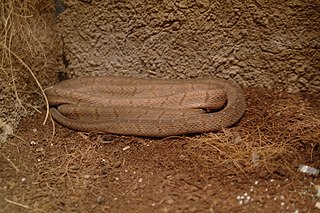 W
WDasypeltis medici, known commonly as the East African egg-eater and the eastern forest egg-eater, is a species of nonvenomous snake in the family Colubridae. The species is endemic to Africa.
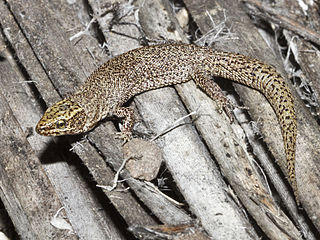 W
WThe desert night lizard is a night lizard native to southern California east of the Sierras and San Gabriel Mountains into Baja California, southern Nevada, southwestern Utah and extreme western Arizona.
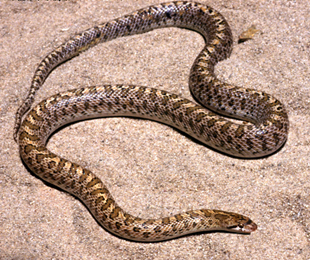 W
WArizona elegans is a species of medium-sized colubrid snake commonly referred to as the glossy snake or the faded snake, which is endemic to the southwestern United States and Mexico. It has several subspecies. Some have recommended that A. elegans occidentalis be granted full species status.
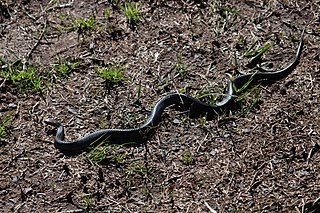 W
WHemiaspis signata is a species of venomous elapid snake endemic to Australia, where it is found along the east coast.
 W
WThe Malayan snail-eating turtle is a species of turtle in Malayemys genus of the family Geoemydidae.
 W
WOphryacus undulatus is a venomous pitviper species found in the mountains of central and southern Mexico. No subspecies are currently recognized.
 W
WPlestiodon egregius, the mole skink, is a species of small lizard endemic to the Southeastern United States.
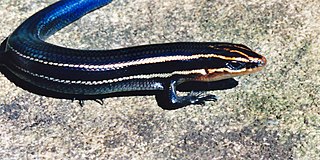 W
WThe four-lined skink (Plestiodon tetragrammus) is a species of lizard, which is endemic to North America. It is a medium-sized member of the Plestiodon skinks.
 W
WThe prairie skink is a species of skink endemic to the prairies east of the Rocky Mountains in North America. It is one of only seven species of lizards that occur in Canada.
 W
WThe pygmy copperhead is a venomous, elapid, snake species.
 W
WRhineura floridana, known commonly as the North American worm lizard, Florida worm lizard, graveyard snake, or thunderworm, is a species of amphisbaeninan in the family Rhineuridae. The species is the only member of the monotypic genus Rhineura, and is found primarily in Florida but has been recorded in Lanier County, Georgia. There are no subspecies that are recognized as being valid.
 W
WThamnophis couchii, commonly known as Couch's garter snake, the Sierra garter snake, or the western aquatic garter snake, is a species of snake in the family Colubridae. The species is endemic to the western United States.
 W
WSphaerodactylus macrolepis, also known as the big-scaled least gecko, big-scaled dwarf gecko, or cotton ginner, is a gecko distributed in the United States Virgin Islands and the British Virgin Islands and Culebra, Puerto Rico in the Caribbean. It is one of over 100 species in the genus Sphaerodactylus.
 W
WSphaerodactylus notatus, also known as the Florida reef gecko or brown-speckled sphaero, is a small species of gecko native to the Caribbean.
 W
WThe Texas alligator lizard is a species of lizard in the subfamily Gerrhonotinae of the family Anguidae. The species is endemic to the central region of the American state of Texas, and south into adjacent northern Mexico.
 W
WThe tiger rattlesnake is a highly venomous pit viper species found in the southwestern United States and northwestern Mexico. No subspecies are currently recognized. The specific name tigris, Latin for "tiger", refers to the many narrow dorsal crossbands, which create a pattern of vertical stripes when viewed from the side.
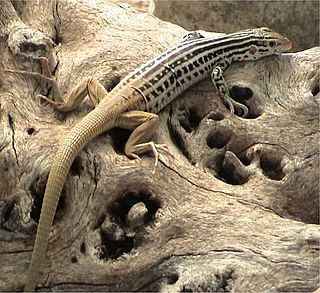 W
WThe little striped whiptail is a species of lizard found in the southwestern United States and in northern Mexico. A significant amount of research was done on the species during the mid-1990s, with several new subspecies being added, many of which some sources consider to be distinct enough to warrant full species status, and the research is ongoing. It is called little to distinguish it from many other species known as striped whiptails and to indicate that it is the smallest of those species.